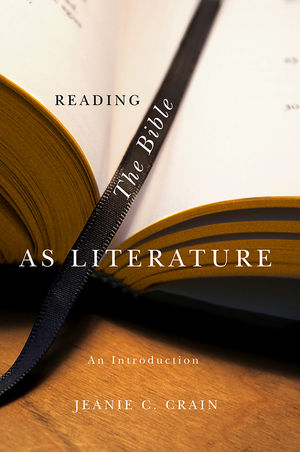Reading the Bible as LiteratureISBN: 978-0-7456-3507-1
Hardcover
256 pages
August 2010, Polity
 This is a Print-on-Demand title. It will be printed specifically to fill your order. Please allow an additional 10-15 days delivery time. The book is not returnable.
Other Available Formats: Paperback
|
||||||
Reading the Bible as Literature provides the ideal
entry-point to the process of reading, understanding, and assessing
what many recognize to be the important and powerful literature of
the Bible. Such reading holds potential for helping students
understand literature generally and the Bible in itself. The book
introduces the tools of literary analysis, including: language and
style, the formal structures of genre (narrative, drama, and
poetry), character study, and thematic analysis.
The overall organizational structure of the book proceeds incrementally from basic literary elements to higher units of form. Each chapter includes an outline, preliminary considerations that provide background and insight into scholarly debates, and an explanation of the literary qualities of the primary text through specific examples, exercises, and directions for further study.
The book emphasizes the act of reading itself, focusing upon the whole text as it exists in its current form. It invites an experiential entering into and reliving of the Bible’s stories, encourages analytical and holistic reading, explores multiple interpretations, and embraces a power of language originating in the mythological, metaphorical, and symbolic. Above all, the book seeks to return the Bible to the common reader and to build in that reader an appreciation for a collection of ancient, literary texts often trivialized by competing theologies or marginalized by a relentless insistence upon fact, science, and history.
The overall organizational structure of the book proceeds incrementally from basic literary elements to higher units of form. Each chapter includes an outline, preliminary considerations that provide background and insight into scholarly debates, and an explanation of the literary qualities of the primary text through specific examples, exercises, and directions for further study.
The book emphasizes the act of reading itself, focusing upon the whole text as it exists in its current form. It invites an experiential entering into and reliving of the Bible’s stories, encourages analytical and holistic reading, explores multiple interpretations, and embraces a power of language originating in the mythological, metaphorical, and symbolic. Above all, the book seeks to return the Bible to the common reader and to build in that reader an appreciation for a collection of ancient, literary texts often trivialized by competing theologies or marginalized by a relentless insistence upon fact, science, and history.



